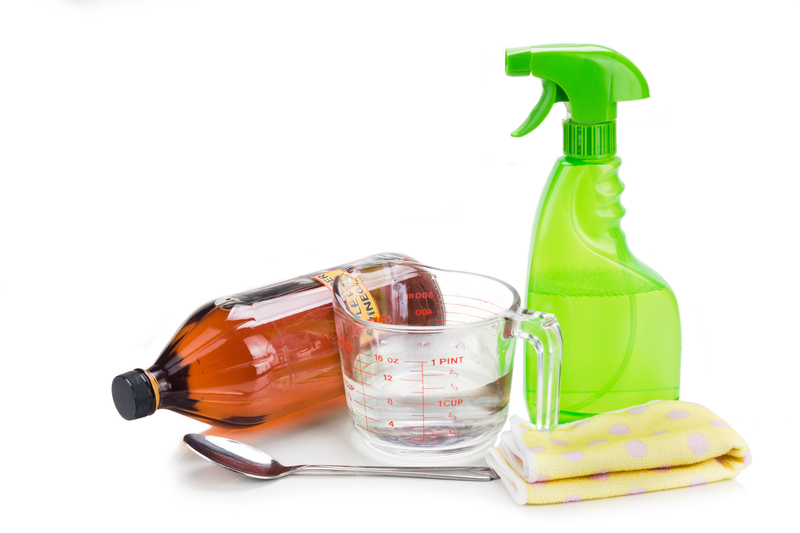Protect Your Sofa: Discover Safe Techniques for Cover Washing
Posted on 21/05/2025
Protect Your Sofa: Discover Safe Techniques for Cover Washing
Sofas are the heart of the living room--where we relax, entertain, and make memories. To keep your sofa looking its best, proper cover care is essential. Discovering safe techniques for cover washing will not only enhance your sofa's appearance but also boost its longevity. This comprehensive guide explores tried-and-tested strategies to protect your couch and ensure that every component sparkles with freshness--without causing damage.

Why Proper Sofa Cover Care Is Essential
Everyday use exposes your sofa to dust, stains, allergens, and pet hair. Regular washing of the sofa cover can:
- Maintain appearance: Prevent stains from settling and keep colors vibrant.
- Improve hygiene: Remove dust, bacteria, and allergens for a healthier home.
- Increase lifespan: Protect fabric fibers and structure, extending the life of your investment.
However, improper washing methods can result in shrinkage, color fading, and surface damage. That's why learning safe sofa cover washing techniques is crucial.
Understanding Your Sofa Cover Fabric
Before you get started, it's essential to identify the type of fabric your sofa cover is made from. Different materials require distinct cleaning approaches to maintain texture and prevent damage.
Common Sofa Cover Materials
- Cotton: Naturally durable and breathable, but may shrink if washed improperly.
- Polyester and Microfiber: Stain-resistant and robust, though they can attract lint and pet hair.
- Linen: Elegant but prone to creasing and shrinking; needs gentle handling.
- Velvet: Luxurious and delicate, often requiring professional care.
- Leather: Needs specific conditioners and should never be machine washed.
- Blends: Many covers use a mix of fibers for added resilience. Always follow the manufacturer's tag.
Tip: Check your care label for the recommended cleaning method (machine wash, hand wash, or dry clean only). If no instructions are available, test on a small, inconspicuous area first.
Preparing for Safe Sofa Cover Washing
Preparation is key to successful cleaning and protecting your sofa cover.
Step-by-Step Prep Guide
- Vacuum the cover: Remove crumbs, dust, and loose fibers with a vacuum before washing. Use an upholstery attachment for best results.
- Check for stains: Spot clean stains before full washing using gentle fabric-safe stain removers.
- Remove the cover carefully: Unzip or unfasten covers and note their orientation for easy reassembly.
- Read care instructions: Carefully review tags for specific washing, drying, and ironing recommendations.
Safe Ways to Wash Sofa Covers at Home
There are several safe approaches to washing sofa covers. Choosing the right one depends on the fabric type, cover design, and level of soiling.
1. Machine Washing Your Sofa Cover
- Check compatibility: Only machine wash covers labeled as machine-washable.
- Use gentle cycles: Select a delicate or gentle wash setting to avoid agitation damage.
- Cold water is best: Wash in cold or lukewarm water to prevent shrinking or color fading.
- Choose mild detergent: Use a gentle liquid detergent to preserve fabric quality and provide deeper cleaning.
- Avoid bleach: Bleach and harsh chemicals can weaken fibers and fade colors.
- Wash separately: Do not overload the washer; wash the cover alone or with similar fabrics to prevent color transfer.
- Extra rinse: Use an extra rinse cycle to remove detergent residues.
Pro tip: If your washing machine offers it, select an "extra gentle" or "hand wash" cycle for even more protection.
2. Hand Washing Sofa Covers
For delicate fabrics or non-machine-washable covers, hand washing is a reliable and safe sofa cover cleaning method.
- Fill a large tub or basin with cold or lukewarm water.
- Dissolve mild detergent and submerge the cover, gently agitating it with your hands.
- Spot clean stains with a soft brush or cloth, using extra detergent as needed.
- Soak for 10-30 minutes depending on the level of dirt.
- Rinse thoroughly with clear water until all soap is removed.
- Squeeze gently to remove excess water; avoid wringing, which can distort the shape.
Hand washing takes more effort, but it's exceedingly safe for delicate upholstery covers prone to wear and tear.
3. Dry Cleaning for Special Fabrics
If your sofa cover's care label reads "dry clean only"--respect that instruction. Materials like velvet, wool, and some blends are susceptible to water damage and should be professionally cleaned. Local dry cleaners often handle removable sofa covers and provide specialized treatment to protect your couch covers from harm.
Drying Techniques: Preventing Damage and Shrinkage
Cleaning is only half the battle. Safe drying is equally critical to protecting your sofa cover and preventing irreparable damage.
Air Drying: The Gentlest Solution
- Lay flat: Arrange the cover evenly on a clean, dry towel or rack to preserve its shape and prevent stretching.
- Avoid direct sunlight: Prolonged exposure can fade colors and weaken fabric fibers.
- Turn regularly: Flip the cover periodically to ensure complete, even drying.
Never drape covers over a single bar or hang them by corners--this can cause warping or wrinkling.
Machine Drying: Proceed With Caution
- Check the care label: Only tumble dry if specified as safe.
- Low heat only: High heat can shrink and damage fibers.
- Remove promptly: Take the cover out while slightly damp and reshape as needed.
Tip: Air drying is almost always the safest drying method for sofa covers, ensuring protection from heat-related shrinkage or damage.
Ironing and Restoring Shape
Once dry, your sofa covers may need a touch-up to restore crisp lines and a smooth appearance. Here's how to iron and reshape safely:
- Choose the right heat setting: Match the iron temperature to your fabric (e.g., low for synthetics, medium for cotton, high for linen).
- Iron inside out: This reduces risk of shine marks on visible surfaces.
- Use a pressing cloth: A clean cotton cloth between the iron and the cover protects against scorching and imprints.
- Steam when possible: Vertical steamers are gentle on most fabrics and help relax creases.
- Install covers while slightly damp: This trick allows for a snug fit and wrinkle-free finish as the cover dries onto the sofa.
Stain Removal: Safe Spot Cleaning for Sofa Covers
Accidents happen. That's why it's important to know how to target stains safely before or between full washes:
- Blot, don't rub: Gently dab at stains with a clean, dry cloth to soak up as much as possible without spreading.
- Use fabric-safe cleaners: Apply a solution of mild soap and water or specialty upholstery cleaner.
- Test first: Always spot test cleaners on a hidden area to avoid discoloration.
- Rinse and dry: Remove any residue with a damp cloth and allow to fully dry before use.
For stubborn stains, consider professional cleaning to protect your sofa from permanent marks or damage.
Keeping Your Sofa Cover Clean Between Washes
Preserving your freshly cleaned sofa covers is easy with a few simple maintenance habits:
- Vacuum regularly: Weekly vacuuming reduces dust, crumbs, animal hair, and allergen buildup.
- Rotate and fluff: Switch and flip cushions to distribute wear evenly.
- Use throws or blankets: Shield high-traffic areas using washable throws, reducing the need for frequent full washes.
- Address spills immediately: Immediate action prevents stains from setting and becoming permanent.
- Keep pets groomed: Clean pets mean less hair and dander on your sofa covers.
Professional Tips for Long-lasting Sofa Covers
Following safe sofa cover washing techniques not only cleans but also protects your valuable furniture. Consider these expert insights:
- Stick to a schedule: Wash covers every 3-6 months, or more often with pets or allergies.
- Rotate spare covers: Having an extra cover set extends the life of both.
- Check for wear and tear: Address minor repairs (like loose seams or zippers) to avoid bigger problems.
- Be mindful of chemicals: Even "gentle" detergents can build up--rinse thoroughly to protect sensitive skin.

Frequently Asked Questions About Safe Sofa Cover Washing
Can I wash all sofa covers at home?
Not all covers are created equal. Always check the care label. Covers labeled "dry clean only" or made from velvet, wool, or delicate fabrics require professional treatment. For other types, use gentle wash techniques.
What if my sofa cover shrinks?
If minor shrinkage occurs, you may be able to stretch the damp cover back over the sofa before it dries fully. Significant shrinkage, however, is usually irreversible, so always choose safe washing and drying methods to prevent this outcome.
How often should I clean sofa covers?
For everyday use, plan to wash sofa covers every 3-6 months. If you have allergies, young children, or pets, consider cleaning more frequently.
Can I use regular laundry detergent for sofa covers?
Choose a mild, unscented detergent designed for delicate fabrics. Heavy-duty or scented detergents may leave residues or trigger allergies, and bleach can permanently damage covers.
Is steaming effective for cleaning sofa covers?
Steaming is a great way to freshen and sanitize covers between full washes, especially for fabrics that tolerate moisture. However, avoid excessive heat and always check manufacturer recommendations first.
Conclusion: Protecting Your Sofa with Safe Cover Washing
Protecting your sofa starts with proper cover care. By adopting safe techniques for washing sofa covers, you extend the life of your investment, enjoy a fresher and healthier home, and maintain the visual appeal of your central living space. Always pay close attention to fabric types, use gentle products and settings, and prioritize regular cleaning routines. For challenging stains or delicate materials, don't hesitate to seek professional advice. With these simple but effective practices, your sofa will remain a clean, welcoming centerpiece for years to come.
Take the first step to protect your sofa today--start with a gentle, safe cover wash and enjoy the difference!





